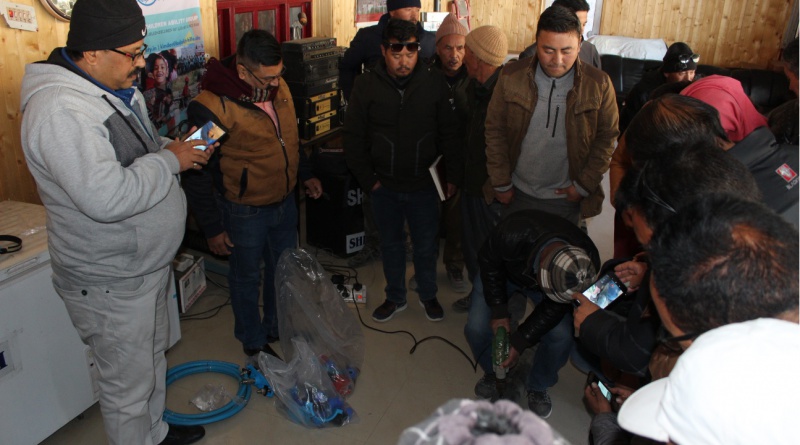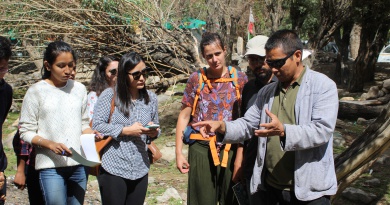Workshop for PHE workers
Activity: Operations and Maintenance of Ductile iron Pipes and Household Service Connection Date: November 26, 2018 Location: Sheynam Community Hall, Leh Participants: 46 (35 men+11 women)
Speaker (s): S Kariyappa, Assistant Executive Engineer from Karnataka Urban Water Supply and Drainage Board, Hubli; Kiran Sarode and Kantilal M Patil from Kimplas Piping
- Objective: To make the PHE workers and linemen familiar with the working of ductile iron pipes as all the existing pipes in Leh town are being replaced with more durable ductile iron pipes for more than 1,000 public stand posts (PSP) and 4,500 house connections
- Summary Agenda: November 26- Time Activity PiC 11 AM Welcome speech Tenzin Motup 11:10 AM Maintenance of ductile iron (DI) pipes S Kariyappa 12:30 PM New technology for ductile pipes Kiran Sarode, Kantilal 1:30 PM Lunch break 2:15 PM Demonstration on installation of Tee on ductile iron pipe using newest technology available in the market Kiran Sarode, Kantilal 3 PM Vote of thanks Phunchok Wangyal, PHE Department
- Summary of Results: S Kariyappa
There are three reasons for leakages in DI pipes: failure of joints, corrosion of pipes, and third-party damages.
Reasons for failure of joints: failure of rubber gasket, improper insertion of pipe in the socket, improper alignment of the joint, and settlement of soil. Corrosion could happen to pipes that are laid in waterlogged areas and those pipes that are in contact with sewage water.
Most of the pipes are damaged due to the third party while laying telephone cables, power cables, gas pipes, widening of roads, constructing surface drains, etc. - Solutions: Joint leakage can be rectified by cutting pushed out the gasket and putting the gasket back to its original place using caulking tools. Once the gasket is repositioned, lead wool should be filled around the joint and caulking with the use of tools.
To overcome leakages of pipes due to corrosion, excavate trenches at leakage spots to identify the extent of corrosion and then mark the length of the pipe that needs to be replaced. The portion of the corroded pipe should be cut and mechanical joints should be inserted on either side of the existing pipe before lowering and aligning the new pipe piece. Thereafter, place the mechanical joints in the new pipe and then align and tighten it with nuts and bolts. Once the pipe is rectified, allow the flow of water to check water tightness and refill the pipe once everything is analysed.
In case of damage to pipes from a third party, the spot from where leakages are reported should be excavated and then the nature of the damage should be ascertained. The damaged pipe should be marked and cut at both ends. Mechanical joints should be inserted on both the sides of the existing pipe before it is lowered and aligned with the new pipe. The new pipe itself should be attached to the mechanical joint and then aligned and tightened with nuts and bolts.
In case of extension of the branches: A tee should be provided. The process of excavation should be initiated and the length of the DR pipe from the tee should be marked following which the marked portion should be cut at both ends of the pipe. Mechanical joints should be inserted on either side of the existing pipe and then the DI Tee should be lowered and aligned. - Kiran Sarode and Kantilal M Patil from Kimplas Piping:
Demonstration of the functioning of the pipes manufactured by the company - Phunchok Wangyal: AEE PHE Thankful to LEDeG, BORDA, European Union, Liveable Leh and the speakers for providing information and training to the workers from their department.

